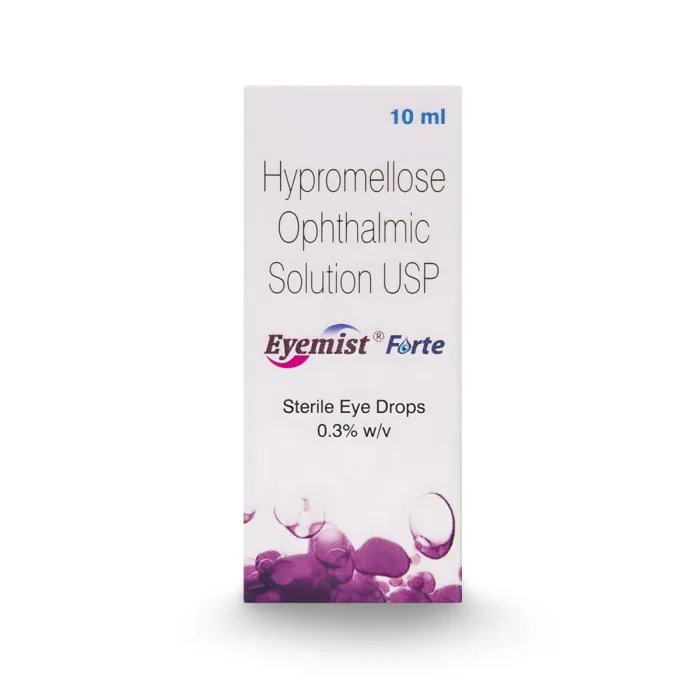Keratitis is an eye condition primarily characterized by the inflammation of the cornea.
Peripheral Ulcerative Keratitis (PUK) is a specific type of Keratitis in which the inflammation occurs on the outer edge or periphery of the cornea.
It is a painful eye condition that can affect your vision and day-to-day activities.
It is important to diagnose PUK as it can be one of the first signs of a life-threatening systemic disease.
Management of PUK through specialized treatments can help prevent any complications.
This article will explore PUK in detail, including its causes, symptoms, treatments, and more.
What is Peripheral Ulcerative Keratitis
Peripheral Ulcerative Keratitis is a specific type of Keratitis that involves inflammation of the outer edge of the cornea. The cornea is the transparent top layer of the eye.
This inflammation can lead to painful ulcers and red eyes.
PUK affects approximately 3 people in a million per year and is more common in older individuals.
PUK is typically linked to underlying systemic health issues, making early detection and treatment essential.
Buy your pack of artificial tears from Cheap Medicine Shop now!
Save up to 90% on your medicine bills

Eyemist Forte 10 ml

Milflox 0.5% 5 ml

Restasis 0.05% Ophthalmic Emulsion

Pred Forte 10 ml
Peripheral Ulcerative Keratitis Symptoms
 Source: razyph_from_Getty_Images
Source: razyph_from_Getty_ImagesSymptoms of Peripheral Ulcerative Keratitis may include:
- Eye redness
- Eye pain
- Blurred vision
- Sensitivity to light (photophobia)
- Excessive tearing
- White or yellowish discharge
- Corneal thinning and ulceration
You should note that it is not necessary to experience all these symptoms to receive a PUK diagnosis.
Peripheral Ulcerative Keratitis Causes
Peripheral Ulcerative Keratitis can result from local or systemic causes and infectious or non-infectious causes.
- Autoimmune diseases like Rheumatoid Arthritis, Systemic Lupus Erythematosus, and Wegener’s Granulomatosis can often be linked to PUK
- Infections such as herpes simplex virus and other microbes can trigger PUK in susceptible individuals
- Vasculitis, an inflammation of blood vessels, can lead to PUK by affecting the blood supply to the cornea
Mooren’s ulcer is a form of PUK that develops in the absence of a systemic disease that can cause PUK. It may affect one or both eyes.
Mooren’s ulcer can cause eye pain that is more severe as compared to other forms of PUK.
Diagnosis and Treatment
 Source: pixelshot
Source: pixelshotDiagnosing PUK involves a thorough eye examination and assessing your medical history. The treatment approach often involves:
- Managing underlying conditions such as an autoimmune disease or infection that causes PUK is a priority
Rheumatologists and infectious disease specialists may be involved in the patient’s care. - Anti-inflammatory medications like corticosteroid eye drops and oral immunosuppressive medications may be prescribed to control inflammation and prevent corneal damage
- Antiviral or antibiotic eyedrops to treat an infectious cause of PUK and fasten the healing process of the ulcer
- Corneal protection, like the use of lubricating eye drops and a protective eye shield, may be recommended to prevent further injury to the cornea
- Surgical intervention may be necessary in severe cases to restore vision and preserve the integrity of the eye. Surgical interventions such as amniotic membrane grafting or corneal transplantation may be needed
Consult a medical professional if you experience any of the PUK symptoms for specialized and effectiive treatment.
Summing Up
Peripheral Ulcerative Keratitis is a type of Keratitis in which the outer edge of the cornea is inflamed.
It can cause symptoms like light sensitivity, tearing, redness, and eye pain. It can be distressing to experience these symptoms as they affect your ability to function normally.
The cause of PUK can be a systemic disease like Rheumatoid Arthritis. It can also have infectious and non-infectious causes.
Early diagnosis and treatment of PUK can help prevent any complications like corneal damage and mortality.
Treatment typically involves using steroid, antiviral, or antibiotic eyedrops to relieve symptoms and treat infectious causes.
Corneal protection and lubricating eyedrops can also help relieve symptoms and prevent further corneal damage.
Surgical interventions may be necessary in severe cases. Consult an eye care specialist if you experience PUK symptoms.
Find relief from these PUK symptoms with antibiotic treatment- Zaha Eye Drops.

Frequently Asked Questions
Can Peripheral Ulcerative Keratitis cause permanent vision loss?
Yes, untreated Peripheral Ulcerative Keratitis can lead to permanent vision loss due to corneal damage.
See our Recommendations
Is Peripheral Ulcerative Keratitis contagious?
No, Peripheral Ulcerative Keratitis itself is not contagious, but the underlying infections that may cause it can be.
See our Recommendations
Can contact lens use increase the risk of Peripheral Ulcerative Keratitis?
Yes, contact lens use can increase the risk of eye infections. But, Peripheral Ulcerative Keratitis is a rare condition not commonly associated with contact lenses.
See our Recommendations
What is the prognosis for Peripheral Ulcerative Keratitis with early treatment?
With early and appropriate treatment, the prognosis for Peripheral Ulcerative Keratitis is generally good, and most individuals can preserve their vision.
See our Recommendations
Are there any long-term complications associated with Peripheral Ulcerative Keratitis?
Yes, Peripheral Ulcerative Keratitis can lead to corneal scarring, thinning, and vision loss if not promptly and effectively treated.
Regular follow-ups with an eye specialist are crucial to monitor the condition’s progress and address any complications.
See our Recommendations
Cheap Medicine Shop only refers to credible, authoritative sources for our content. If you’re curious about how we ensure the integrity of our content, we encourage you to read our Content Information Policy.














